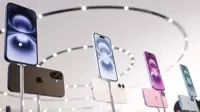25 million cellphones go dead as government enforces ban
01 Dec 2009
Some 25 million mobile handsets lacking a unique identification or IMEI number went dead at midnight, after the government rejected a demand by telecom service providers to further extend the deadline for cutting off services to such phones.
The International Mobile Equipment Identity (IMEI) number is a 15-digit code which is incorporated into all officially-made handsets. It appears on the operator's network whenever a call is made. The absence of this number makes it impossible to trace either the caller or the phone.
Originally meant to facilitate tracing of stolen handsets, the IMEI number has assumed special significance for India due to the frequent terrorist attacks in recent months. The department of telecommunications has been seeking to ban illegal handsets since early April, as security agencies pointed out that these were being used by militant groups to make untraceable calls.
Loath to lose about 30 per cent of its customers who use illegal handsets, the Cellular Operators' Association of India (COAI) has managed so far to get the deadline extended, while steps are taken to 'implant' IMEI numbers into phones that don't have them. (See: Illegal mobile phones may no longer ring)
The operators have set up 1,600 outlets for implanting the IMEI number on handsets lacking it through standardised software. Officially, all one has to do is to contact one's operator and pay Rs199. But operators admit they are nowhere near reaching the millions of consumers suspected of owning a handset without the number.
Confusion reigns
Reports from across the country say that mobile stores were flooded on Monday and today with customers seeking to get their phones regularised. Many of them were so far unaware that they needed an IMEI number.
Also, the rush was focussed on the big stores, as most users did not know that a large number of outlets had been authorised to implant IMEI numbers. For example, in Tamil Nadu 130 outlets have been authorised for the purpose, but the rush was concentrated in three Chennai Stores. Similar reports emanated from Pune and elsewhere.
The Indian market has been flooded with cheap but smart-looking handsets incorporating fancy features. China is seen as the main culprit, but Taiwan is not far behind. And in the world's fastest-growing mobile market, fly-by-night Indian entrepreneurs cannot be kept out of the game.

.webp)


.webp)




























